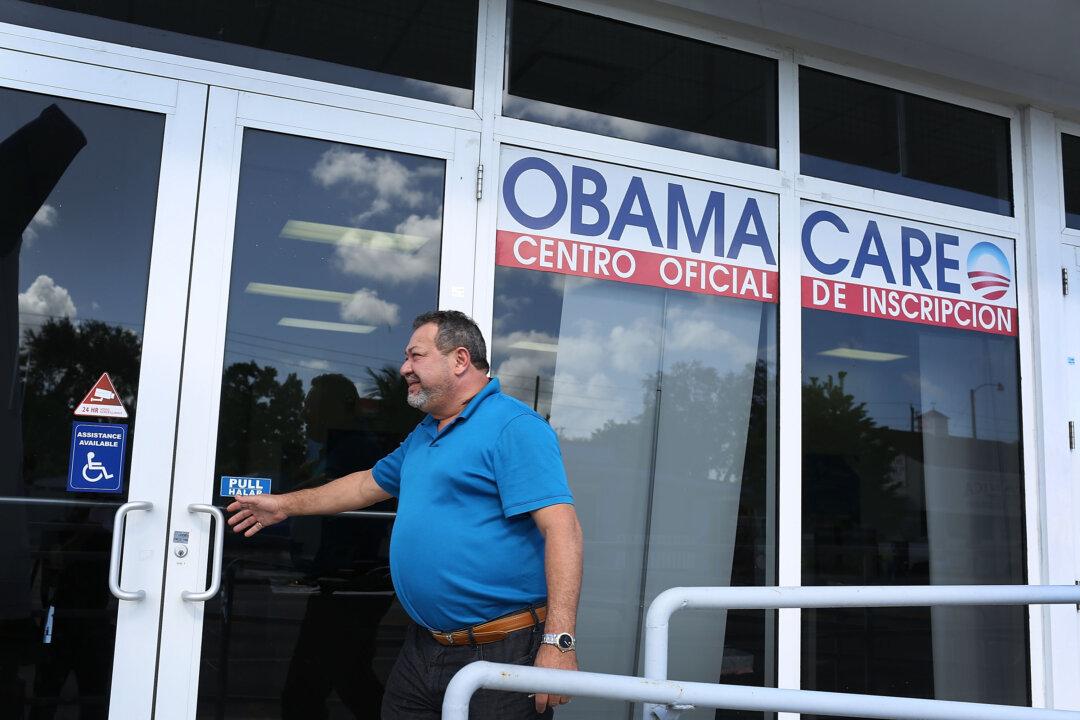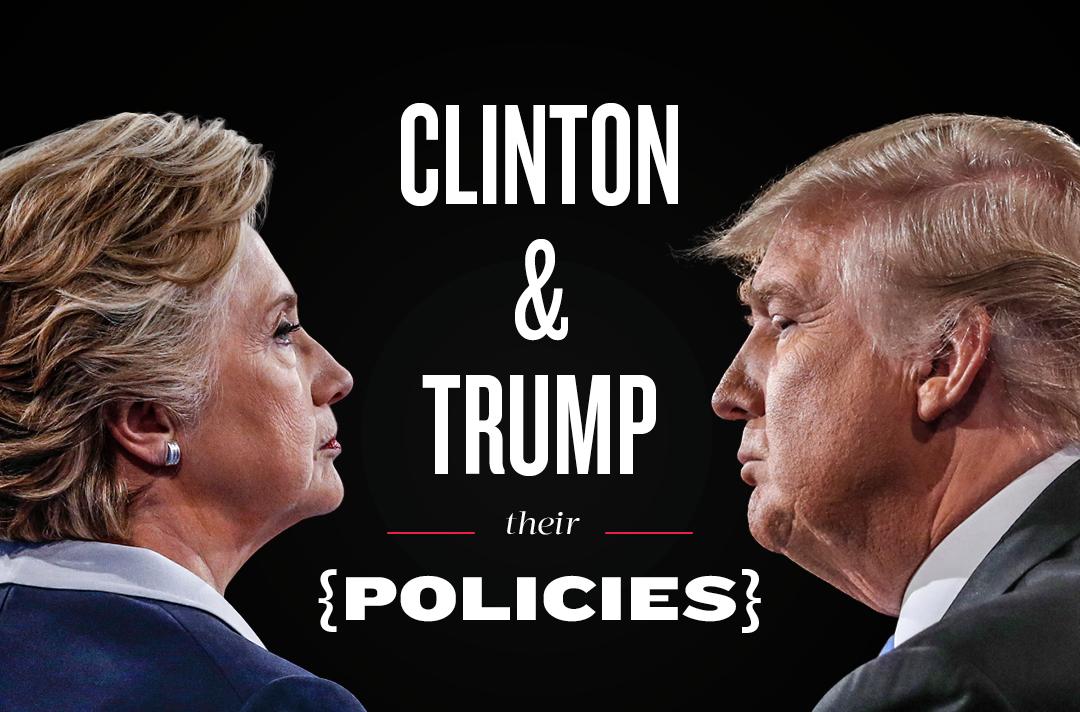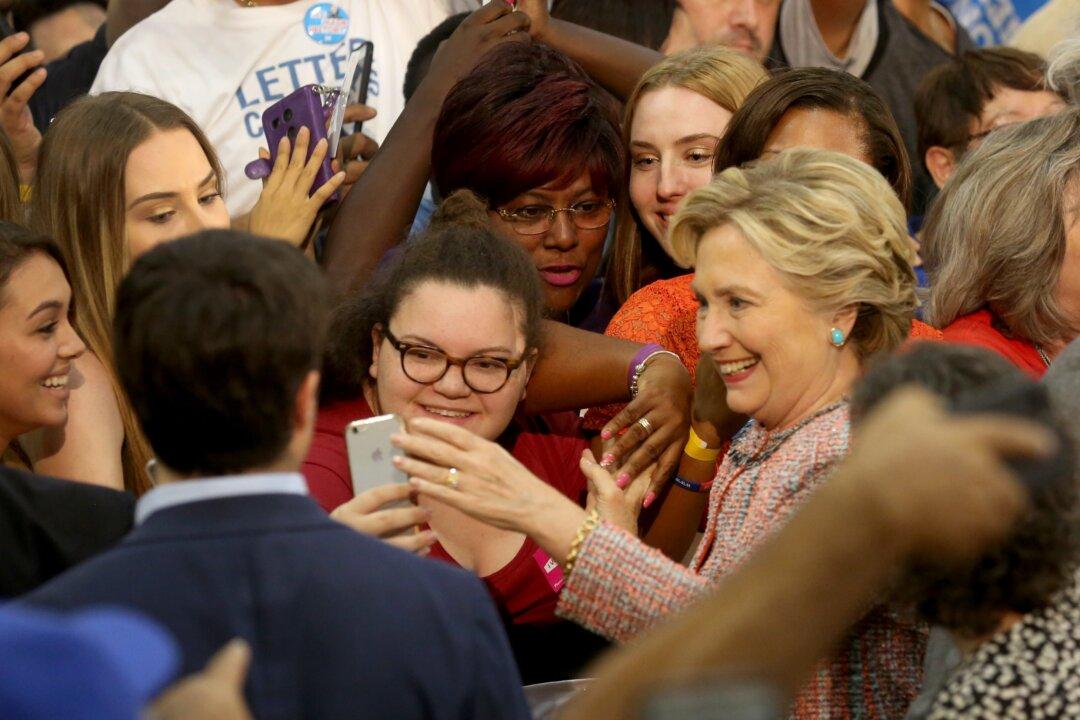NEW YORK—Bronx resident Cristina Holguin, originally from Ecuador, became a U.S. citizen last year. She will vote for the first time in this year’s presidential race.
“I am so excited,” said Holguin, 29, who plans to register this week. “It was my dream.”
Holguin, a medical assistant who came to the United States nine years ago, says she will vote for Hillary Clinton.
“We have no choice,” she said about the decision between Republican candidate Donald Trump and Clinton for the Democrats. She does not agree with what Trump has said about immigration and Latinos. She’s also enthusiastic about a woman becoming president.
While more Latinos voted during the 2012 presidential elections than ever before, statistically the percentage of Latinos who vote has remained stagnant since the early 1990s. This year, the Latino community is seeing a push to get a record number of people registered to vote.
It is an effort that would mostly benefit Clinton, who is running far ahead of her Republican opponent in support among Latinos. A high voter turnout could even turn some red states blue, experts say.
Latinos Aren’t Registering
Approximately 27.3 million Latinos will be eligible to vote this year, according to Pew Research Center’s analysis of U.S. Census data, with millennials making up almost half the Latino number, at 44 percent.
Since the last election, about 3.2 million young Latino U.S. citizens will have turned 18, according to Pew’s projections. Almost all of them are born in the United States.
Those are record numbers, owing to the group’s fast-growing population and the high number of young first-time voters. Yet the potential power it represents is somewhat muted by low voter registration rates in that community.
During the last six presidential elections, voter registration among eligible Latinos was consistent at around 58.4 percent. The 2016 race is not expected to be any different, according to a report by the Center for Latin American, Caribbean & Latino Studies (CLACLS) at the City University of New York’s Graduate Center.
Hispanic registration numbers are considerably lower than other major race or ethnic groups in the United States. For example, about 73 percent of non-Hispanic white and black potential voters registered in 2012, according to the report.
“Latinos are not flexing their voting muscle,” said the report’s author, Laird W. Bergad, director of CLACLS.
On the flip side, when Latinos do register, they turn up at the polls in large numbers. In the 2012 election, 80 percent of registered Hispanics voted.

Why Latinos don’t register is unclear, Bergad says, adding that racism and voting rights are not what’s stopping them.
Edward D. Vargas, a senior analyst at opinion research firm Latino Decisions, says getting young people out to the polls will be key to reversing the trend.
“Latinos always have the most first-time voters every year, which means we need more outreach and can’t just assume everybody has been voting all their lives,” he said.
Latino Vote Could Swing States
In the 2012 presidential race, Latinos voted for President Barack Obama over Republican candidate Mitt Romney by a wide margin, 71 percent to 27 percent, according to Pew Hispanic Center’s analysis of exit polls.
To win the presidency this year, Trump would need to collect 47 percent of the Hispanic vote, according to calculations by Latino Decisions.
Currently, Clinton leaves Trump behind when it comes to support from Latinos, 55 percent to 26 percent, according to a recent McClatchy-Marist poll.
Young Latinos, ages 18–30, support Clinton over Trump, 43 percent to 11 percent, according to GenForward, a recent survey of the Black Youth Project at the University of Chicago with The Associated Press-NORC Center for Public Affairs Research.
“In 2016, there is a good chance that the anti-immigrant and anti-Latino rhetoric from Trump could push Latinos away from the Republican Party overall and impact other election contests,” said Vargas.
Particularly important are swing states, or red states where a strong Hispanic turnout could turn the tide.
In Republican Texas, there were 4.8 million eligible Hispanic voters in 2014, making up a sizable 28 percent of the state’s electorate, according to different CLACLS report. The Latino population in that state has more than doubled between 1990 and 2014. However, Latino voter registration in Texas was only 53 percent during both the 2008 and 2012 campaigns.
In Arizona, also traditionally red, only 40 percent of eligible Latinos—who make up 22 percent of the electorate—went to the polls in 2012.
Bergad says that Arizona, a state that has an “anti-immigration policy [and] yet the Latino population doesn’t vote,” would go Democrat if more Latinos registered and voted.
Vargas agrees. “Interesting enough, Arizona is at a tipping point and has a chance of being a competitive battleground state because the Latino vote is growing so quickly.”
It’s a different story in Florida, a swing state. In Florida, Latino registration numbers are already high, jumping from 62.5 percent in 1996, to 72.1 percent in 2012.
“Florida will be decided by Latino vote,” said Bergad, adding that he expects it to go to Clinton.
Clinton is beating Trump in Florida by 6 points, 48 percent to 42 percent, with 9 percent undecided, according to an early August poll by Suffolk University.
Vargas says other states where Hispanics are likely to impact the presidential race are Colorado, Nevada, and possibly North Carolina, Virginia, and Pennsylvania.
Nonetheless, he says we shouldn’t assume Latinos will vote in record numbers.
“It takes a lot of work by the political parties, all of the candidates, and the Latino advocacy groups to contact people and make sure they vote,” he said.
Push to Get Out the Vote
Univision, the leading Spanish-media outlet in the United States, announced in February an initiative to increase Hispanic voter turnout this year.
The company said in February that it would do so by coordinating events with the help of its 126 local TV and radio stations across the country, as well as reaching out through digital platforms, including the website YourAmerica.com and a bilingual text messaging tool. The text message resource allows people to access informative videos and tips on how to participate in the election.
Meanwhile, an HBO special, “Habla y Vota” (“Speak Up and Vote”), featuring high-profile Latinos, including Univision journalist Jorge Ramos, comedian George Lopez, and entertainers like Prince Royce and Adrienne Bailon, will run in mid-September. The project aims to get the Latino community to speak up by registering to vote and casting a ballot in November.
“I think it’s important to recognize that as a community we have a voice,” said actress and “The Real” host Bailon in the special’s trailer.
“Habla y Vota” includes personal stories and views on the U.S. political process and tries “to open up a conversation that will lead people into voting,” said Alberto Ferreras, the show’s creator.
Ferreras said they made sure to include younger guests too. “I think young people need to get on board,” he said.
One of the featured guests, singer Prince Royce, 27, tells viewers he used to think his vote didn’t matter.
“What is one vote going to do? I’m just a dude in the Bronx,” he said in the special.
Ferreras says the ultimate purpose of the project is to break stereotypes and encourage participation.
“All stories will make you go vote,” said Ferreras.




